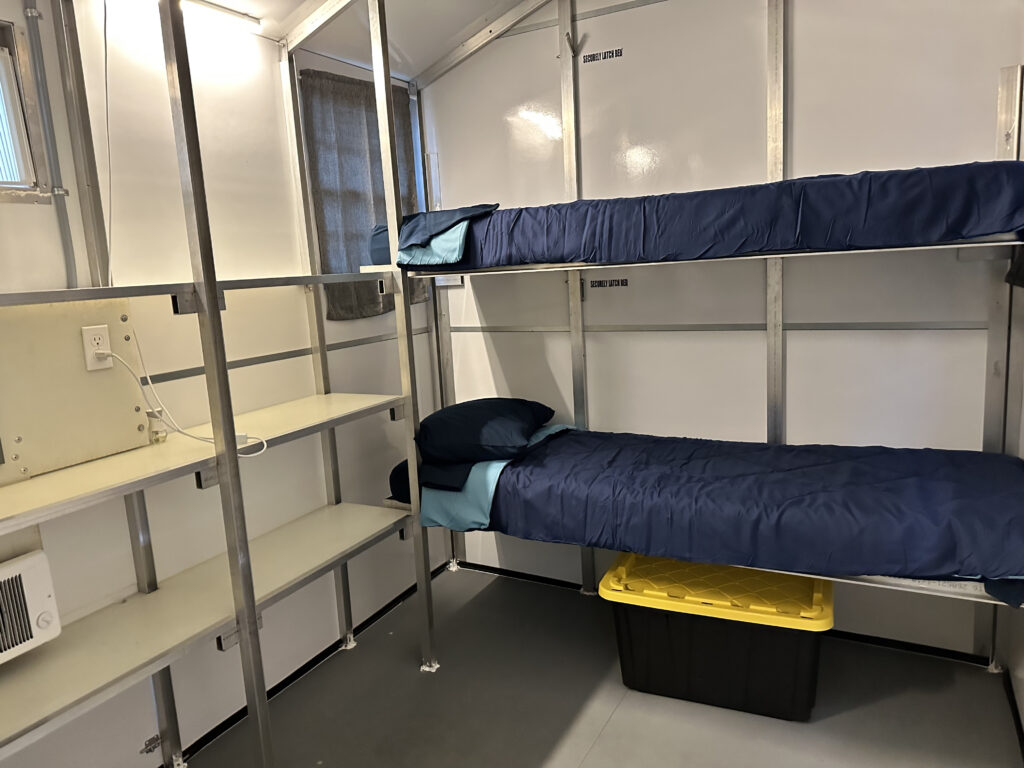When San Jose Councilmember Omar Torres was challenged to sleep in a homeless shelter, he responded by staying at two different sites.
Former homeless resident Sketch Oppie invited the entire city council to experience staying in a shelter to help them understand why allocating dollars to affordable housing is the better long-term solution to homelessness. While other councilmembers said they were open to the idea, Torres was the only one to raise his hand and commit. Over the last two weeks, Torres stayed at two different interim shelters to understand the value of these sites and to empathize with those who live there.
The first shelter was a sober living center run by the Salvation Army for men experiencing homelessness. The second shelter was Casitas de Esperanza—a county-owned shelter for homeless families run by nonprofit Amigos de Guadalupe. Casitas de Esperanza is one of eight quick-build temporary housing sites in the city, known as interim housing. The people who secure spots have private rooms and sometimes a bathroom—a step up from communal shelters or living in a car or on the street.
Torres said it was an eye-opening experience.
“One, it’s heartbreaking. Two, it puts a face to our crisis,” Torres told San José Spotlight an hour after leaving the site Wednesday morning. “It’s inspirational because I saw dads and moms going to work in the morning. They are trying their best to get out of the situation that they probably were forced to be in.”

San Jose has about 6,340 homeless residents—a decrease of 4.7% over the last year. City officials said the reason for the downward trend is due to an increase in affordable housing and temporary shelters.
Martiza Maldonado, executive director of Amigos de Guadalupe, said it’s important for all councilmembers to experience living in transitional housing because they are responsible for directing funding to alleviate these conditions.
“Spending a short time there does not equate to living there all the time,” Maldonado told San José Spotlight. “Nonetheless… they may experience, even for a short time, who the people are who live in transitional housing (and) the amazing promise they offer to the community if they are given the support they need.”
Torres said the sites are clean and safe. When he entered the Salvation Army shelter, workers had him blow into a breathalyzer, gave him new clothes and asked him to shower right away.
“There was a room for TVs and in that room a man was working on his steps for sobriety. One was doing artwork and the other was writing poetry,” Torres said. “A lot of times we fail to realize that there is a human face and a story to homelessness. They have talent and jobs and oftentimes you couldn’t even tell they were homeless.”
In California, most people become homeless due to loss of income and unaffordable housing costs, according to a recent study by the University of California San Francisco. About 72% of those surveyed said if they had a $300 to $500 monthly subsidy it would’ve saved them from being homeless. Contrary to popular belief, the same study found 90% were last housed in California before becoming homeless—and 75% live in the same county where they lost their housing.
“It’s economic, its medical—like someone couldn’t pay their bills after a medical procedure or because of a medical emergency,” Torres said. “Or it’s because of immigration status. These are the three reasons people are homeless in San Jose… Not drug abuse or mental health.”
He said substance abuse and mental health are certainly part of the equation, but more often than not, homelessness in San Jose is comprised of neighbors who were down on their luck. That’s what struck Torres when he stayed at the sites, the councilmember told San José Spotlight.
Torres has been consistent in his support for interim housing, but after his stay, he said he’s more convinced than ever that San Jose needs more sites. However, he emphasized it shouldn’t be at the expense of the root solution to solving homelessness: building affordable housing.
Mayor Matt Mahan, who unsuccessfully advocated to allocate millions more to interim housing construction, previously told San José Spotlight he also plans to stay at an interim shelter in July.
Contact Jana Kadah at [email protected] or follow @Jana_Kadah on Twitter.



Leave a Reply
You must be logged in to post a comment.